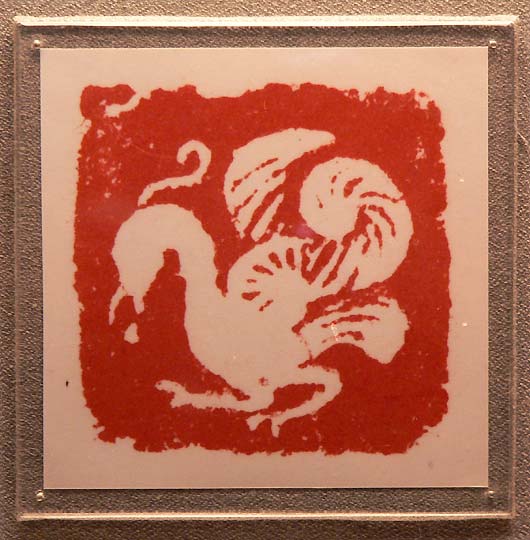
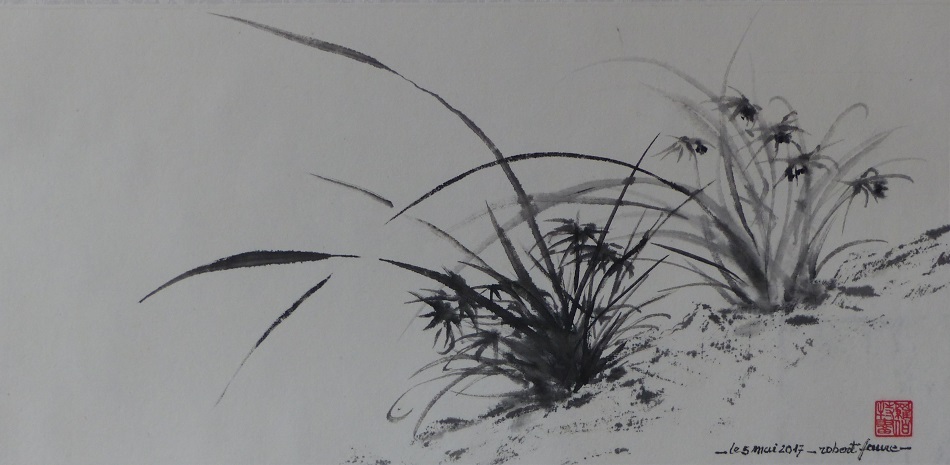 |
| Conversation d'orchidées © |
The Major Oriental Schools
Today, despite the stereotyped paintings proposed to tourists, the art of calligraphy and the ink painting still draws its sources from its immense history and remains very much alive today.
In the Major Schools, that art continues to propose a method with several echelons: technique, aesthetic, philosophic and sometimes spiritual or initiatory by following the work of a master or an expert known as "a living treasure in Japan.
Robert Faure reminds us that within the framework of the Academy of fine Arts of Hangzhou in China, in order to pass the diploma and practise professionally one must consecrate 3 years studies in pure calligraphy and a further 4 years specialisation in painting.
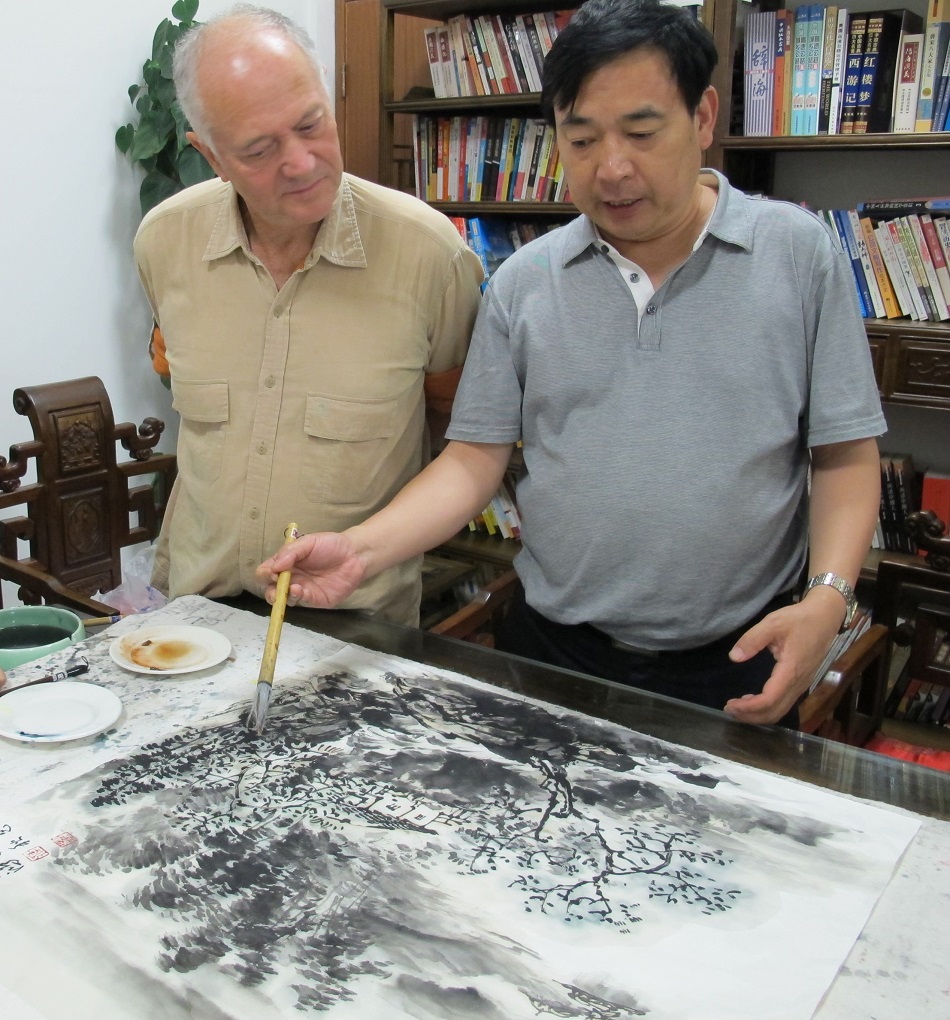 |
| Robert Faure with his professor Li Xiang Hong in China |
Without wanting to reach such a demanding level of excellence which would necessitate the investment of several years of ones life, the Dragon school proposes courses based on 20 years of education, exchanges with painters and calligraphists both Asian and from the west in a program spread over and accompanied by nine precise stages.
The program, divided over several years according to the student's possibilities, has the advantage of being adapted to our comprehension and western practises.
It progressively marks the technical progress of each person going from the simplest to the most complex without forgetting to deepen the historical knowledge of the civilisations that have brought the art of T'chan and Sumi-e to its height of perfection.
Learning
To begin it is not necessary to know how to draw or to paint only to accept to be followed during the exercises which are comprised of tracing and simple lines which allows one to gain ease and firmness by correctly holding the brush. Little by little the breath and the respiration accompany the dexterity of the movement with the body’s complete participation.
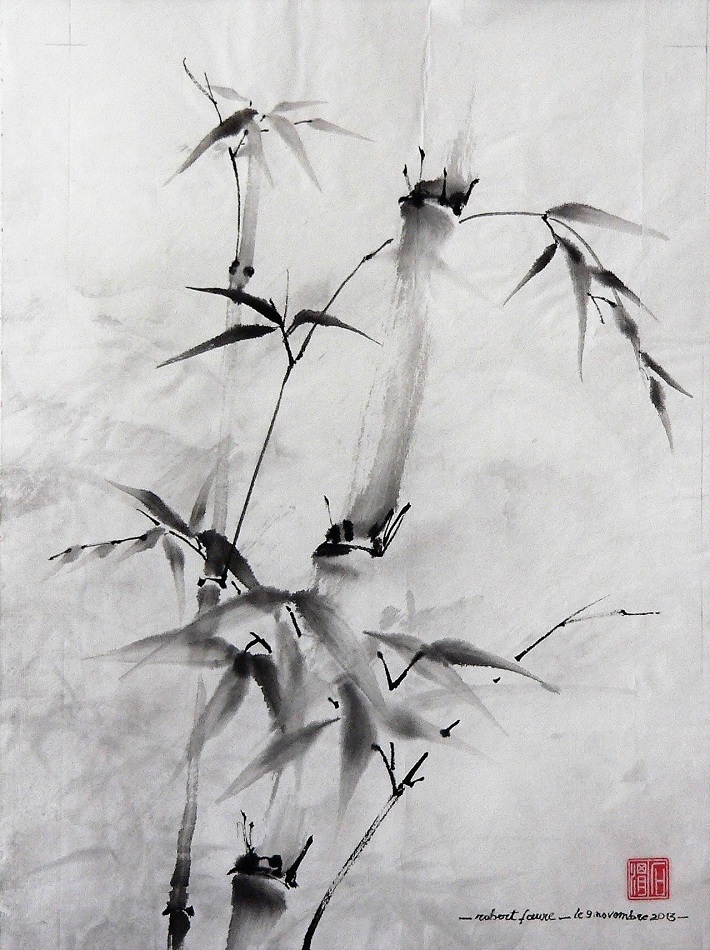 |
| Bambou © |
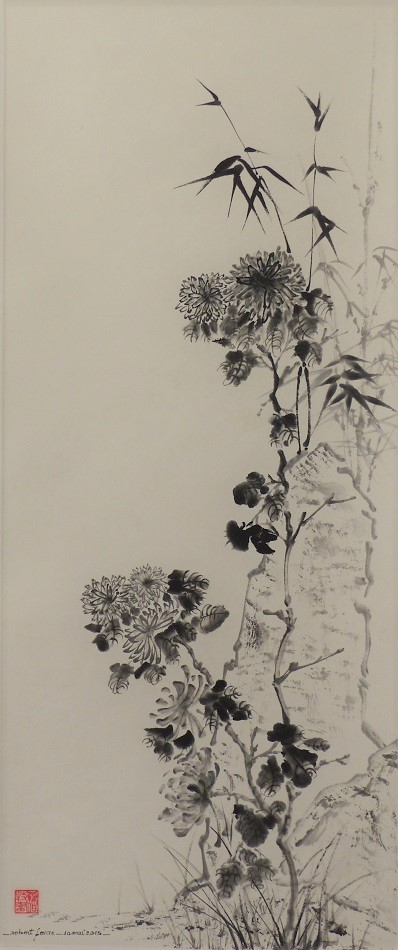 |
| Heureux chrysanthème entre roche et bambou © |
We then approach the 4 basic subjects recognised by most traditional schools which we call the 4 gentlemen: Orchids, chrysanthemums, plum blossom and bamboos.
These 4 essential subjects allows one to acquire the techniques and the basic attitude which will permit the student to achieve more elaborate subjects such as the infinite variety of landscapes.
The learning of a movement without fear, without retouches necessitates an interior arrangement, total peace, a taste for the rich and unique moment where the apprentice receives the powerful momentum of creation.
The paint does not necessarily provide something more, but gives us something less; less clumsiness, less indifference in our eyes, less pride in fleeting successes.
It has revealed for centuries, admirable prophesies of beauty.